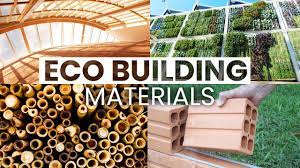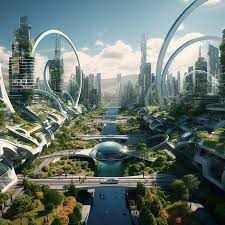In the age of environmental consciousness, the quest for sustainable innovation has become imperative. As the world grapples with pressing climate challenges, the realm of green technology has emerged as a beacon of hope. From renewable energy solutions to eco-friendly materials, advancements in green technology are revolutionizing industries, driving economic growth, and safeguarding the planet for future generations.
Unleashing the Power of Renewable Energy:

One of the most remarkable feats of sustainable innovation lies in the realm of renewable energy. Solar, wind, hydro, and geothermal power have transformed the energy landscape, offering clean alternatives to fossil fuels. Breakthroughs in solar panel efficiency, wind turbine design, and energy storage technologies have significantly bolstered the viability of renewable sources. The proliferation of smart grids and decentralized energy systems further enhances resilience and efficiency, paving the way for a sustainable energy future.
Eco-Friendly Materials: Building a Greener Tomorrow:

Traditional manufacturing processes often exact a heavy toll on the environment through resource depletion and pollution. However, the advent of eco-friendly materials is reshaping the way we build and manufacture. Innovations such as bioplastics, recycled metals, and sustainable composites are reducing the ecological footprint of industries ranging from construction to consumer goods. Additionally, advancements in 3D printing technology are enabling the fabrication of intricate structures using recycled materials, heralding a new era of sustainable production.
Smart Cities: Fostering Sustainable Urban Development:

With rapid urbanization placing unprecedented strain on resources and infrastructure, the concept of smart cities has gained prominence as a means to promote sustainability. Integrating cutting-edge technologies such as IoT sensors, data analytics, and AI, smart cities optimize resource utilization, enhance mobility, and mitigate environmental risks. From efficient waste management systems to intelligent transportation networks, these innovations are instrumental in creating livable, resilient urban environments that prioritize sustainability and quality of life.
Nature-Inspired Design:

Nature has long served as a source of inspiration for innovation, and biomimicry exemplifies this ethos. By emulating biological processes and structures, researchers and engineers are developing solutions that are not only sustainable but also highly efficient. From self-cleaning surfaces inspired by lotus leaves to energy-efficient buildings modeled after termite mounds, biomimetic design holds immense potential for addressing complex challenges while minimizing environmental impact.
Collaborative Innovation: The Key to Sustainable Progress:

Perhaps the most powerful catalyst for sustainable innovation is collaboration. By fostering partnerships between governments, businesses, academia, and civil society, we can pool resources, expertise, and perspectives to tackle the multifaceted challenges of sustainability. Open innovation platforms, incubators, and accelerators play a crucial role in nurturing a culture of collaboration and entrepreneurship, empowering innovators to translate bold ideas into tangible solutions that benefit both people and the planet.
Conclusion:
In the face of escalating environmental crises, sustainable innovation has emerged as a beacon of hope, offering viable pathways to a greener, more resilient future. From renewable energy solutions to eco-friendly materials and smart city initiatives, advancements in green technology are reshaping industries, revitalizing economies, and safeguarding the planet for generations to come. By embracing the ethos of sustainability and fostering collaboration, we can unleash the full potential of innovation to address the most pressing challenges of our time. Together, we can pave the way towards a brighter, more sustainable tomorrow.


